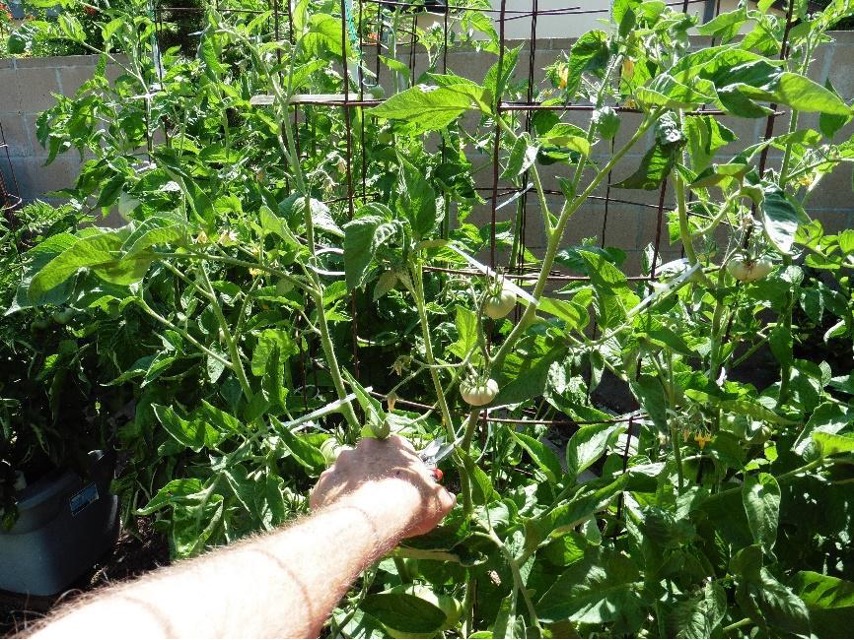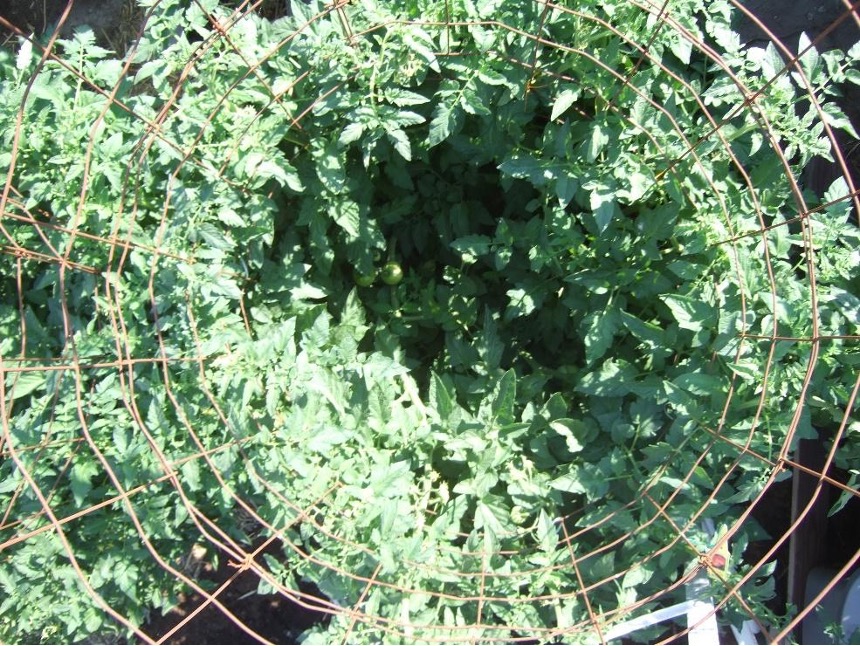How to prune your tomato plants
There is really no right or wrong in pruning and if you don’t prune at all, you will still have plenty of tomatoes.
So, why should you prune tomato plants? Let’s cut to the chase:If your plant is growing out of control, it’s OK to cut it back. Don’t prune so much as to put your plant in distress or make it think it is dying.
How to prune tomato plants
Determinate tomato plants (will say on the label or google your plant’s name) grow like a bush. Prune off leaves that come into contact with the soil to help prevent diseases and pests in the soil from getting on your plants. And pruning lower leaves also improves air circulation around the base area. Otherwise not much pruning on determinate type tomato plants is needed.
Indeterminate plants (will say on the label or google your plant’s name) grow tall with long vines. Prune off leaves that come into contact with the soil to help prevent diseases and pests in the soil from getting on your plants.
Vines and suckers are the same thing. Every vine, every sucker you prune would have potentially produced tomatoes. If you would like or need to prune these vines or suckers, it’s OK. Once the plant is too tall—reached the top of the cage—prune off some of these vines at the top or gently let them grow back down to the ground. If you excessively top off vines all at once, your tomato plant may think it’s dying and send the message to ripen all the green tomatoes ASAP. Don’t go crazy with your clippers.
Caution: Sunscald / sunburn. Pruning vines/suckers that are helping shade mature tomatoes may result in sunscald because fruit will be more exposed to the sun. It’s like too much blistering hot direct sunshine on your fruit … tomatoes do not need direct sunlight on them to ripen.

Below is how the main vines generally grow on most indeterminate tomato plants. (Indeterminate grow vines, determinate grow like a bush) If you do little or nothing, many, many vines will grow in addition to what you see in the drawing. Every time a leaf appears usually a vine grows from the crotch area where that leaf meets the trunk/stem/vine. As your tomato plant grows you will have tons of vines. It’s OK to thin out these vines or top them off at the top of the cage. Don’t prune off your best, most healthy vines.

So, as your tomato plant grows, the vines you see above you want to keep. Notice the lower vines growing from the main stem/trunk then branch into 2 vines. After branching into 2 vines, prune off others that want to grow. See the main trunk at the top? As your plants grows the main stem/trunk will divide into 2 vines and each of those 2 vines will branch into 2-3 vines. Keep these, prune off the others that want to grow. The picture and vines are generally speaking: Mother Nature does not normally produce “Cookie Cutter” tomato plants. Play it by ear, understand the concept and every plant is a little different. Remember, if you do absolutely nothing, you are still going to get lots of tomatoes. Otherwise just remember there is no right or wrong unless you do so much pruning you kill your tomato plant. This rarely happens. You could be the first. Hahahaha.
For those that want to get a little more involved in pruning tomato plants and give it a try!
Start out doing your best pruning just 1 or 2 plants the first season of pruning. Some of you probably have no life and nothing better to do so have at it.
How to prune, where to start? Plant your indeterminate tomato plant. Good plants are like “Better Boy” and “Big Beef” as these are capable of producing large amounts of beefsteak size tomatoes. Books tell you to plant deep but … do not plant deep … plant at the same depth as in the container it came in from the store. When you use the great potting soil we have talked about, you do not need to plant deep and it is actually best you do not plant deep. Some of your best vines grow from the bottom portion of your tomato plant.
Next, as your plant grows, trim off leaves that come in contact the soil. Vines will grow from the main trunk as in the drawing above. Use a heavy duty cage.
The vines will grow off the main trunk as you see in the drawing. Let/help vines grow from the trunk to the outside of the cage. Each of these main vines can grow 4-6 feet in length and produce maybe 6-8-10 big beefsteak size tomatoes. As these vines grow to the outside and up the outside of the cage–zip tie the vines to the cage to prevent eventual weight of tomatoes collapsing the vine to the ground.
Once you have enough vines growing up the outside of the cage—there will be more vines wanting to grow from these main vines—trim/prune them off. Your pruning—it’s probably not going to be perfect but it doesn’t need to be. Remember, if you do nothing, you will get plenty of tomatoes. As this whole process unfolds, remember every time a new leaf comes out you get a new vine. Pinch/prune these new vines off. Vines and suckers are the same thing. Every vine, every sucker you prune would have potentially produced tomatoes.

Use bamboo sticks or similar as seen in the picture above to train/help the vines grow where you want them to grow towards the outside of the cage. Once long enough—zip tie the vine to the outside of the cage as the vine grows up on the outside and towards the top of the cage. Any little vines coming off this vine, clip off.

Pruning off a sucker: Each time a leaf grows usually a new vine/sucker grows. Thin these out.
And one day when you have no life other than pruning your tomato plants, when you look down from the top of your cage and it’s hollow as all vines are growing on the outside of the cage…..hahaha.

An “Early Girl” tomato in a container. Notice how the vines are zip tied as they grow up on the outside of the cage. No zip ties and all these vines would collapse to the ground from the weight of the tomatoes.

Always remember … there is really no right or wrong in pruning and if you do no pruning at all, you will get plenty of tomatoes.
You are welcome to share this information with others—clubs—perhaps share this with your general membership to include those that could not attend the lecture, family, friends, etc.
Sharing tips helps us be better growers.
Dave Freed / the Tomato Guy